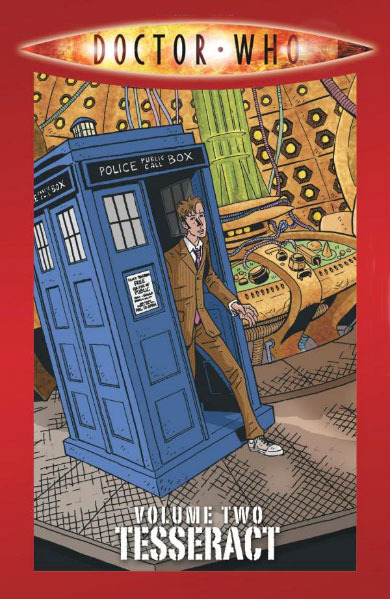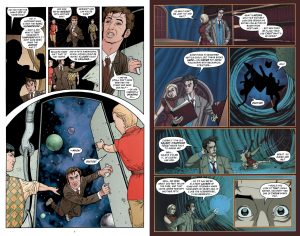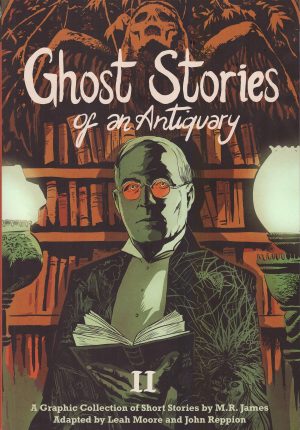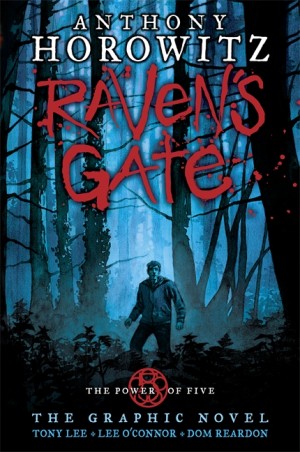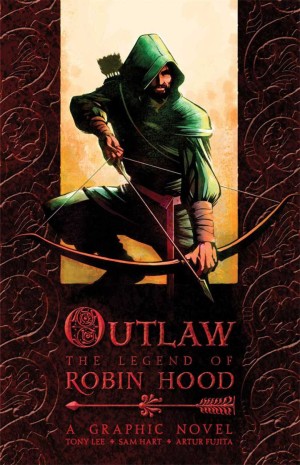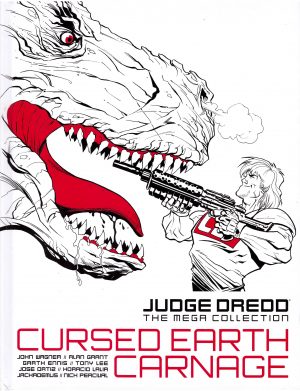Review by Ian Keogh
In the Hollywood of the 1920s the Doctor acquired two travelling companions unknown to TV viewers, prospective actress Emily Winter and studio dogsbody Matthew Finnegan. As also revealed in Fugitive, there are people with big plans who are keen to ensure the Doctor’s not around when they begin them. Emily and Matthew receive a crash course in what it’s like travelling with the Doctor in the opening two-chapter story in which the Tardis is merged with another ship, beginning a race against time to ensure the coupling doesn’t become permanent.
Like other icons such as Batman and Judge Dredd, the Doctor can welcome assorted artistic interpretations, and there’s a fair gulf between Al Davison’s form of realism and the out and out cartooning of Blair Shedd. Yet they’re both good, ensuring the action is clear and the personalities of the cast are well defined. Both also have to design creatures not seen in the TV show, and both manage this well, with Shedd’s mechanical aliens really impressive.
A few teething problems manifested in Tony Lee’s Fugitive, most prominently a feeling that readers weren’t getting the entire story unless they were intimately familiar with the Doctor and his history. The references to previous incarnations, their exploits and their eccentricities, are far fewer here and better incorporated. They’re just nice touches for those who do know rather than fundamental to understanding. There are two stories, both connected to a larger plot that’s not resolved until Final Sacrifice, but there’s enough entertainment to render that irrelevant. As before, Lee varies the plots well, with the oddities of the Tardis and a rift in space and time contrasting with living trees on the loose in Greenwich Park. Lee also tidily weaves in trapped aliens and the fate of 16th century mystic John Dee. He captures the voice David Tennant used as the Doctor very well, presenting the stream of association rambling and the stock phrases, but not to excess, and also the angry Doctor’s natural talent for encapsulating danger in novel dialogue. His reading of Martha Jones is also good, this via the Advocate, the manipulative villain Lee has running through three books.
There’s always a fear in Doctor Who comics that the introduction of assistants not seen in the TV show offers an unimaginative writer the opportunity for cheap drama by having them make a tragic sacrifice at some stage. Lee’s aware of this, and toys with it nicely in the case of both characters here. Emily is run through assorted versions of her possible fate, while Matthew is convincingly influenced. If there’s a flaw in his use of two characters plucked from 1926 it’s that there’s very little sense of wonder, both at the sights of the present day or at the strangeness of the Tardis. Their stoic acceptance is highlighted by the occasional reminder they’re not from the 21st century. As part of the ongoing crisis Lee introduces a bunch of costumed Medieval knights, who provide some visual distinction, but whose presence is barely needed, which is strange in an otherwise tightly plotted story built to an effective crescendo.
Tesseract is a lot of fun, but technically not for sale in the UK, where it’s combined with Final Sacrifice in The Tenth Doctor Archives volume three.
